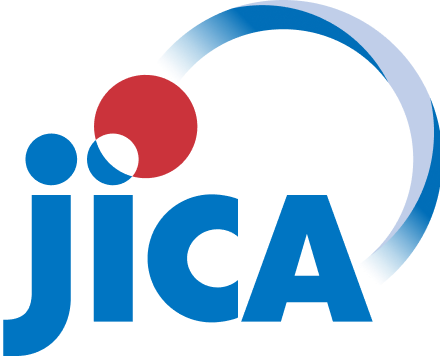PHYTOCHEMICALS, ANTIOXIDANT AND ANTIMICROBIAL ACTIVITY OF CENTELLA ASIATICA EXTRACTED BY SOLVENT-FREE MICROWAVE EXTRACTION
DOI:
https://doi.org/10.11113/aej.v12.17950Keywords:
Antimicrobial activity, Antioxidant, Centella asiatica, Solvent-free microwave extraction, Total phenolic contentAbstract
Solvent-free microwave extraction (SFME) is a green extraction method that requires no solvent and has a short extraction time. This study extracted Centella asiatica using SFME and analysed the extract for its phytoconstituents, phenolic content, antioxidant, and antimicrobial activity. Extraction of 20 g fresh C. asiatica by SFME was carried out for 15 min at 300 W, under vacuum and with stirring. Analysis by gas chromatography-mass spectroscopy (GC-MS) demonstrated that the extract contained phytonutrients such as flavonoids, polyphenol, tannins, and volatile oils. The extract from SFME also produced an IC50 of 0.06 mg/ml and 10.75±0.61 mg GAE/g dry weight of TPC. Using the disc diffusion method, the extract of C. asiatica also exhibited antimicrobial activity against Escherichia coli, Bacillus subtilis, Staphylococcus aureus, Enterobacter sp., Aspergillus niger, Aspergillus flavus, Penicillium chrysogenum and Aspergillus japonicus. This study showed that the C. asiatica extract from SFME retained the antioxidant and antimicrobial properties but in a shorter extraction time and without any solvent. As a result, using green extraction to extract this plant can help to preserve its nutritional content and valuable compounds, which is essential when formulating pharmaceutical, food, and cosmetic products.
References
Chandrika, U. G. and Prasad Kumara, P. A. A. S. 2015. Gotu kola (Centella asiatica): Nutritional properties and plausible health benefits. Advances in Food and Nutrition Research. 76: 125–157. DOI: https://doi.org/10.1016/bs.afnr.2015.08.001
Meshram, P. D., Gore, A. J. and Usmani, G. A. 2015. Analysis and optimization of solvent free microwave assisted extraction of bio-oil from orange peels using response surface methodology. International Journal on Recent and Innovation Trends in Computing and Communication. 3(2): 15–20.
Sadeghi, A., Hakimzadeh, V. and Karimifar, B. 2017. Microwave assisted extraction of bioactive compounds from food: A Review. International Journal of Food Science and Nutrition Engineering. 7(1): 19–27.
Lucchesi, M. E., Chemat, F. and Smadja, J. 2004. An original solvent free microwave extraction of essential oils from spices. Flavour and Fragrance Journal. 19(2): 134–138. DOI: https://doi.org/10.1002/ffj.1274
Chemat, F., Fabiano-Tixier, A. S., Vian, M. A., Allaf, T. and Vorobiev, E. 2015. Solvent-free extraction of food and natural products. TrAC - Trends in Analytical Chemistry. 71: 157–168. DOI: https://doi.org/10.1016/j.trac.2015.02.021
Kumari, S., Deori, M., Elancheran, R., Kotoky, J. and Devi, R. 2016. In vitro and in vivo antioxidant, anti-hyperlipidemic properties and chemical characterization of Centella asiatica (L.) extract. Frontiers in Pharmacology. 7: 400. DOI: https://doi.org/10.3389/fphar.2016.00400
Florczak, M. C. 2014. Extraction and characterisation of the essential oil from Centella asiatica (pennywort) growing in South Africa (Master’s thesis). University of the Witwatersrand, Johannesburg. 326.
Govarthanan, M., Rajinikanth, R., Kamala-kannan, S. and Selvankumar, T. 2015. A comparative study on bioactive constituents between wild and in vitro propagated Centella asiatica. Journal of Genetic Engineering and Biotechnology. 13(1): 25–29. DOI: https://doi.org/10.1016/j.jgeb.2014.12.003
Zhang, H., Yang, X. and Wang, Y. 2011. Microwave assisted extraction of secondary metabolites from plants: Current status and future directions. Trends in Food Science & Technology. 22(12): 672–688. DOI: https://doi.org/10.1016/j.tifs.2011.07.003
Costa, R., Dugo, P. and Mondello, L. 2012. Sampling and sample preparation techniques for the determination of the volatile components of milk and dairy products. In: Bayona, J., Dugo, P., Le, X. C., Xing-Fang, L., Lee, H. K. and Lord, H. Eds. Comprehensive Sampling and Sample Preparation. Elsevier, Messina, Italy. 43–59. DOI: https://doi.org/10.1016/B978-0-12-381373-2.00127-7
Abubakar, A. R. and Haque, M. 2020. Preparation of medicinal plants: Basic extraction and fractionation procedures for experimental purposes. Journal of Pharmacy and Bioallied Sciences. 12(1): 1–10. DOI: https://doi.org/10.4103/jpbs.JPBS_175_19
Idris, F. N., Nadzir, M. M. and Abd Shukor, S. R. 2020. Optimization of solvent-free microwave extraction of Centella asiatica using Taguchi method. Journal of Environmental Chemical Engineering. 8(3): 103766. DOI: https://doi.org/10.1016/j.jece.2020.103766
Singleton, V. L. and Rossi, J. A. 1965. Colorimetry of total phenolics with phosphomolybdic-phosphotungstic acid reagents. American Journal of Enology and Viticulture. 16(3): 144–158.
Pittella, F., Dutra, R. C., Junior, D. D., Lopes, M. T. P. and Barbosa, N. R. 2009. Antioxidant and cytotoxic activities of Centella asiatica (L). International Journal of Molecular Sciences. 10: 3713–3721. DOI: https://doi.org/10.3390/ijms10093713
National Committee for Clinical Laboratory Standards. 1990. Performance standards for antimicrobial disk susceptibility tests. Approved standard M2-A4. Wayne, Pa: National Committee for Clinical Laboratory Standards.
Chong, N. J. and Aziz, Z. 2011. A systematic review on the chemical constituents of Centella asiatica. Research Journal of Pharmaceutical, Biological and Chemical Sciences. 2(3): 445–459.
Bhuyar, P., Rahim, M. H. A., Maniam, G. P. and Govindan, N. 2021. Isolation and characterization of bioactive compounds in medicinal plant Centella asiatica and study the effects on fungal activities. Journal of Microbiology, Biotechnology and Food Sciences. 10(4): 631–635. DOI: https://doi.org/10.15414/jmbfs.2021.10.4.631-635
Ogunka-Nnoka, C. U., Igwe, F., Agwu, J., Peter, O. J. and Wolugbom, P. H. 2020. Nutrient and phytochemical composition of Centella asiatica leaves. Medicinal & Aromatic Plants. 9(2): 346. DOI: https://doi.org/10.35248/2167-0412.20.9.346
Roy, A., Kundu, K., Saxena, G. and Bharadvaja, N. 2017. Estimation of asiaticoside by using RP-HPLC and FAME analysis of medicinally important plant Centella asiatica. Journal of Plant Biochemistry & Physiology. 5: 1000198. DOI: https://doi.org/10.4172/2329-9029.1000198
Udayaprakash, N. K., Ranjithkumar, M., Deepa, S., Sripriya, N., Al-Arfaj, A. A. and Bhuvaneswari, S. 2015. Antioxidant, free radical scavenging and GC-MS composition of Cinnamomum iners Reinw. ex Blume. Industrial Crops and Products. 69: 175–179. DOI: https://doi.org/10.1016/j.indcrop.2015.02.018
Mohammad Azmin, S. N. H. and Mat Nor, M. S. 2020. Chemical fingerprint of Centella asiatica’s bioactive compounds in the ethanolic and aqueous extracts. Advances in Biomarker Sciences and Technology. 2: 35–44. DOI: https://doi.org/10.1016/j.abst.2020.10.001
Lin, T. K., Zhong, L. and Santiago, J. L. 2018. Anti-inflammatory and skin barrier repair effects of topical application of some plant oils. International Journal of Molecular Sciences. 19: 70. DOI: https://doi.org/10.3390/ijms19010070
Hiranvarachat, B., Devahastin, S. and Soponronnarit, S. 2015. Comparative evaluation of atmospheric and vacuum microwave-assisted extraction of bioactive compounds from fresh and dried Centella asiatica L. leaves. International Journal of Food Science and Technology. 50(3): 750–757. DOI: https://doi.org/10.1111/ijfs.12669
Amarni, F. and Kadi, H. 2010. Kinetics study of microwave-assisted solvent extraction of oil from olive cake using hexane. Comparison with the conventional extraction. Innovative Food Science and Emerging Technologies. 11(2): 322–327. DOI: https://doi.org/10.1016/j.ifset.2010.01.002
Paudel, P., Satyal, P., Dosoky, N. S. and Setzer, W. N. 2017. Chemical composition and biological activity of Centella asiatica essential oil from Nepal. American Journal of Essential Oils and Natural Products. 5(4): 5–8.
Raza, S. A., Aziz-ur-rehman, Adnan, A. and Qureshi, F. 2009. Comparison of antioxidant activity of essential oil of Centella asiatica and butylated hydroxyanisole in sunflower oil at ambient conditions. Biharean Biologist. 3(1): 71–75.
Xiao, X., Song, W., Wang, J. and Li, G. 2012. Microwave-assisted extraction performed in low temperature and in vacuo for the extraction of labile compounds in food samples. Analytica Chimica Acta. 712: 85–93. DOI: https://doi.org/10.1016/j.aca.2011.11.034
Alonso-Carrillo, N., de los Á. Aguilar-Santamaría, M., Vernon-Carter, E. J., Jiménez-Alvarado, R., Cruz-Sosa, F. and Román-Guerrero, A. 2017. Extraction of phenolic compounds from Satureja macrostema using microwave-ultrasound assisted and reflux methods and evaluation of their antioxidant activity and cytotoxicity. Industrial Crops and Products. 103: 213–221. DOI: https://doi.org/10.1016/j.indcrop.2017.04.002
Siddhuraju, P. and Becker, K. 2003. Antioxidant properties of various solvent extracts of total phenolic constituents from three different agroclimatic origins of drumstick tree (Moringa oleifera Lam.) leaves. Journal of Agricultural and Food Chemistry. 51(8): 2144–2155. DOI: https://doi.org/10.1021/jf020444+
Meena, H., Pandey, H. K., Pandey, P., Arya, M. C. and Ahmed, Z. 2012. Evaluation of antioxidant activity of two important memory enhancing medicinal plants Baccopa monnieri and Centella asiatica. Indian Journal of Pharmacology. 44(1): 114–117. DOI: https://doi.org/10.4103/0253-7613.91880
Zainol, M. K., Abd-hamid, A., Yusof, S. and Muse, R. 2003. Antioxidative activity and total phenolic compounds of leaf, root and petiole of four accessions of Centella asiatica (L .) Urban. Food Chemistry. 81: 575–581. DOI: https://doi.org/10.1016/S0308-8146(02)00498-3
Castro-López, C., Ventura-Sobrevilla, J. M., González-Hernández, M. D., Rojas, R., Ascacio-Valdés, J. A., Aguilar, C. N. and Martínez-Ávila, G. C. 2017. Impact of extraction techniques on antioxidant capacities and phytochemical composition of polyphenol-rich extracts. Food Chemistry. 237: 1139–1148. DOI: https://doi.org/10.1016/j.foodchem.2017.06.032
FDA. Food additives permitted for direct addition to food for human consumption.https://www.accessdata.fda.gov/scripts/cdrh/cfdocs/cfcfr/CFRSearch.cfm?CFRPart=172
Yuan, M. 2010. Analysis of butylated hydroxytoluene in food with headspace Trap-GC / MS. https://resources.perkinelmer.com/lab-solutions/resources/docs/app_bhtinfoodbyhstrap-gcms.pdf
Corinaldesi, C., Barone, G., Marcellini, F., Dell’Anno, A. and Danovaro, R. 2017. Marine microbial-derived molecules and their potential use in cosmeceutical and cosmetic products. Marine Drugs. 15(4): 1–21. DOI: https://doi.org/10.3390/md15040118
Okoli, S. and Iroegbu, C. U. 2005. In vitro antibacterial activity of Synclisa scabrida whole root extracts. African Journal of Biotechnology. 4(9): 946–952. DOI: https://doi.org/10.4314/AJB.V4I9.71171
Rattanakom, S. and Yasurin, P. 2015. Chemical profiling of Centella asiatica under different extraction solvents and its antibacterial activity, antioxidant activity. Oriental Journal of Chemistry. 31(4): 2453–2459. DOI: https://doi.org/10.13005/ojc/310480
Pitinidhipat, N. and Yasurin, P. 2012. Antibacterial activity of Chrysanthemum indicum, Centella asiatica and Andrographis paniculata against Bacillus cereus and Listeria monocytogenes under osmotic stress. Assumption University Journal of Technology. 15(4): 239–245.
Das, A. J. 2011. Review on nutritional, medicinal and pharmacological properties of Centella asiatica (Indian pennywort). Journal of Biologically Active Products from Nature. 1(4): 216–228.
DOI: https://doi.org/10.1080/22311866.2011.10719089
Jayaprakash, S. B. and Nagarajan, N. 2016. Studies on the bioactive compounds and antimicrobial activities of medicinal plant Centella asiatica ( Linn ). Journal of Medicinal Plants Studies. 4(5): 181–185.
Nagarasan, S. and Boominathan, M. 2017. In-vitro studies on the primitive pharmacological activities of Andrographis paniculata and Centella asiatica. International Journal of Life Science. 5(1): 82–86.
Jagtap, N. S., Khadabadi, S. S., Ghorpade, D. S., Banarase, N. B. and Naphade, S. S. 2009. Antimicrobial and antifungal activity of Centella asiatica (L.)Urban, Umbeliferae. Research Journal of Pharmacy and Technology. 2(2): 328–330.
Byakodi, M. K., Bagewadi, Z. K. and Muddapur, U. M. 2018. Phytoconstituents profiling and evaluation of antimicrobial and antioxidant attributes of methanolic extract of Centella asiatica. Research Journal of Pharmaceutical, Biological and chemical Sciences. 9(3): 493–500.
Sieberi, B. M., Omwenga, G. I., Wambua, R. K., Samoei, J. C. and Ngugi, M. P. 2020. Screening of the dichloromethane: methanolic extract of Centella asiatica for antibacterial activities against Salmonella typhi, Escherichia coli, Shigella sonnei, Bacillus subtilis, and Staphylococcus aureus. Scientific World Journal. 2020: 1–8.
Areekul, V., Jiapiyasakul, P. and Chandrapatya, A. 2009. In vitro antimicrobial screening of selected traditional Thai plants. Thai Journal of Agricultural Science. 42(2) 81–89.
Al-Talib, H., Ali, N. D. M., Suhaimi, M. H., Rosli, S. S. N., Othman, N. H., Mansor, N. A. S., Shah, A. K. S., Ariffin, N. S. and Al-Khateeb, A. 2016. Antimicrobial effect of Malaysian vegetables against enteric bacteria. Asian Pacific Journal of Tropical Biomedicine. 6(600): 211–215. DOI: https://doi.org/10.1016/J.APJTB.2015.12.009
Singh, D., Singh, P., Gupta, A., Solanki, S., Sharma, E. and Nema, R. 2012. Qualitative estimation of the presence of bioactive compound in Centella asiatica : An important medicinal plant. International Journal of Life Science and Medical Science. 2: 5–7.
Fidaleo, M., Zuorro, A. and Lavecchia, R. 2011. Antimicrobial activity of some Italian honeys against pathogenic bacteria. Chemical Engineering Transactions. 24: 1015–1020. DOI: https://doi.org/10.3303/CET1124170
Vadlapudi, V., Behara, M., Kaladhar, D. S. V. G. K., Suresh Kumar, S. V. N., Seshagiri, B. and John Paul, M. 2012. Antimicrobial profile of crude extracts Calotropis procera and Centella asiatica against some important pathogens. Indian Journal of Science and Technology. 5(8): 3132–3136. DOI: https://doi.org/10.17485/ijst/2012/v5i8.25
Kalita, D. and Saikia, J. 2012. Ethonomedicinal, antibacterial and antifungal potentiality of Centella asiatica, Nerium indicum and Cuscuta reflexa - widely used in Tiwa tribe of Morigaon district of Assam, India. International Journal of Phytomedicine. 4(3): 380–385.
Dash, B. K., Faruquee, H. M., Biswas, S. K., Alam, M. K., Sisir, S. M. and Prodhan, U. K. 2011. Antibacterial and antifungal activities of several extracts of Centella asiatica L. against some human pathogenic microbes. Life Sciences and Medicine Research. 2011: 1–5.







